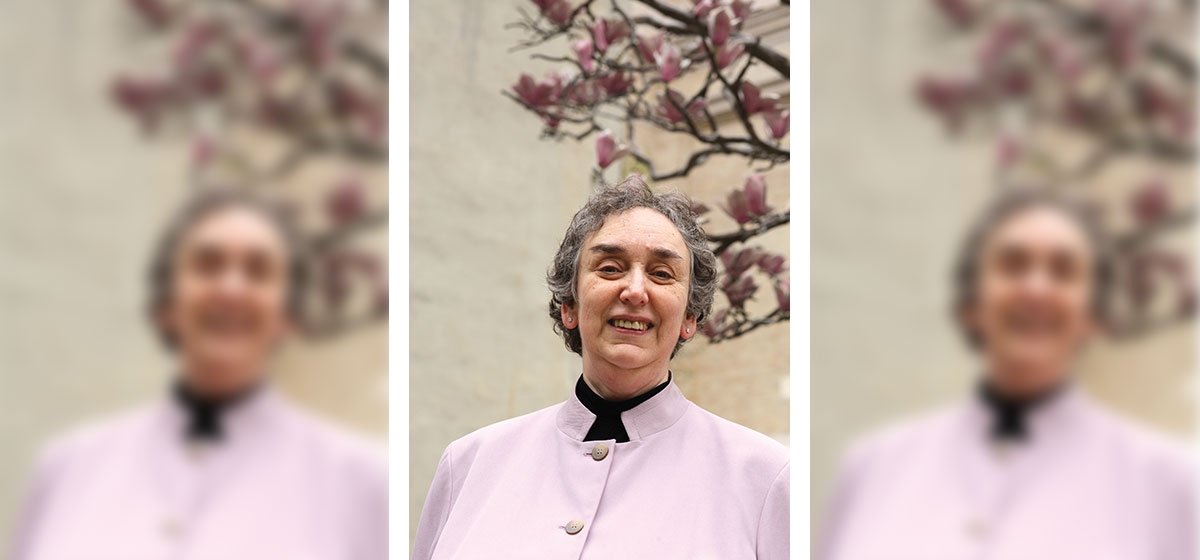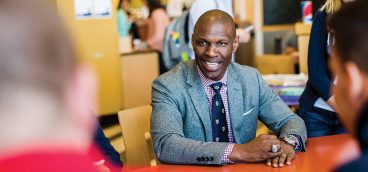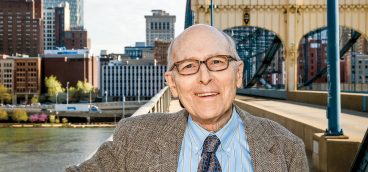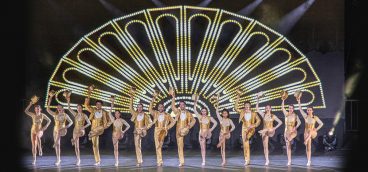Jeanne Pearlman, Philanthropy Executive

I was raised in Squirrel Hill. It was a close-knit community that valued ideas and intellectual activities. For my parents, dinnertime was not only about eating.
It was also about talking, thinking and challenging. Any opinion expressed had to be countered with another opinion. My father would always ask, “Why do you think that?” This caused me to learn how to think.
My family was very progressive. We believed that we had a responsibility to work for the common good, for social justice. My grandparents had done that, my parents did it, and so it made sense for my brother and me to do it, too. My first exposure to the civil rights movement, for example, came as a member of a Jewish youth group. We plotted to run away to Birmingham to join Dr. King in the struggle. We were young and didn’t get very far, but we clearly understood even then that life was about more than one’s self.
My father didn’t believe in television, so we didn’t have one, which made me such an oddball among my friends. My first act of rebellion was running away to our next-door neighbor’s house to watch Mr. Rogers and Josie Carey. It wasn’t that my father didn’t like TV. He just wanted us to read books, listen to music and talk to each other. Ultimately, we got a television but, by that point, my habits were formed.
It’s true that I’m a Pittsburgher in almost every way. My education was in the Pittsburgh public schools. I graduated from Pitt. As a child, the ideal summer day included a walk from Squirrel Hill to Oakland to the Carnegie Library, which was my window on the rest of the world. The books there and the librarians who guided me had an enormous impact on the way I search for answers.
Some Pittsburghers know me as one of the people who helped make the Three Rivers Arts Festival an annual happening. But they should also know that the festival was really the brainchild of a group of some of the most energetic and committed women I’ve ever known — the Women’s Committee of the Carnegie Museum of Art. It started back in 1959, and the thought of it seems somehow romantic and quaint today. One thinks of white-gloved ladies sipping tea and eating artfully made sandwiches. But these ladies were dynamic.
Back then, the city was still undergoing its first “renaissance” and some civic leaders believed that Pittsburgh might do well to have some art Downtown. The Women’s Committee came together and decided that they would show art with which most people in Pittsburgh could identify — paintings and sculptures by Pittsburgh artists. Then they decided to do the most radical thing. Instead of staging the exhibition inside a building, they placed the festival in Point State Park. They had pavilions built, staffed them with volunteers and held the arts festival for three days, Downtown. That first year, the most powerful storm that Pittsburgh had seen in some time ripped through and blew all the art into the river. This was actually an interesting story because it rained every year after that, as well. But it became a tradition, rain in June each year for the festival. Yet, people continued to attend. The festival soon expanded to include the performing arts, a crafts market and children’s programs.
Back in the 1980s, I was on the faculty at Carlow College (now University), which was operated by the Sisters of Mercy. In order to get tenure, we had to publish and serve on committees and have all our degrees in order. But we also had to do service. At the time, I was volunteering with the Thomas Merton Center and the Rainbow Soup Kitchen, and I thought, “This service thing is going to be a breeze for me.” When I went in to see the president of the college, I talked about my credentials, and she said, “Now, we’re going to talk about service.” I said, “Sister, I serve on all these boards. I’m very engaged in the community.” And she said, “No, dear. I have a plan,” which was for me and the other faculty members to get out into the community literally. She believed that, in order to be a good teacher, you couldn’t isolate yourself on campus. So I went to the United Way, where I learned how to raise money. I went to the Pittsburgh Ballet Theater, where we created a program to provide college courses for dancers so they’d be prepared when they had to stop dancing. Then she sent me to the Three Rivers Arts Festival to assist with their public art program and to help them get a National Endowment for the Arts (NEA) grant. While I was there, the director resigned and, as they searched for a replacement, they asked me if I wanted to try it. I said, “I’ll stay for a year.” That was 1989. And I stayed for 11 years.
What you have to remember is that at the arts festival, high-art exhibitions were positioned right next to the artist market, which was next to the children’s programs, which were right next to whatever food we were frying at the moment. It’s a leveler in a sense. We want to show people that art is not just for some people but for all people. Come and bring your family and have this experience. Somehow in our culture, art has become something mysterious and separate. We’re all creative. We’re all artistic. Demystifying the arts was a big part of our mission. The hope was that, when the festival came down, people might attend an exhibition at the Wood Street Gallery or at the Carnegie Museum.
In Pittsburgh, we are fortunate because we have a strong arts community and philanthropic organizations that are committed to supporting it. Of course, it’s always important to support the larger arts organizations, like the opera, the ballet and the symphony, as part of our cultural scene. But it’s equally important to support what smaller organizations are doing — community-based organizations, culturally specific organizations — so that the arts experience is available to the broadest number of people. And The Pittsburgh Foundation is proud to support small and mid-sized arts organizations.
I think Pittsburgh is the nation’s best-kept secret, which is both good news — and annoying. As we approach the city’s 250th anniversary, there are a lot of very smart people thinking about how to commemorate it. But it’s more than marketing. It’s really about asking people to come, take a chance and visit this wonderful region.
To me, the key is to ask what we are going to do as individual citizens. I’m a firm believer in the agency of each individual. I work at a foundation, so I have opportunities to engage in a variety of arenas. But as an individual, my passion is the public schools. I think that every child in this city deserves an outstanding education that prepares that child to be a learner for the rest of his or her life. And that’s what I want to work on. The people of our community benefit so much when individuals become involved in their passions — maybe it’s their own neighborhood, making it the best it can be. At the same time, the business community continues to try to figure out ways to attract new business here. Our elected officials are working to create financial stability so that we can have a region that is fiscally sound. We also need to have a city that is not crippled by racial divisions. And we need to have the kind of city where young people come and say not only “I love the trails, kayaking or the arts,” but “I love my job, because it’s as good a job as I could get anywhere.” You see, when we begin to say, “Improving the quality of life in our city is someone else’s job,” we’re just passing the buck. What is each of us going to do to help make things better?
All of this is connected to how I grew up. It’s part of the legacy of my mother and father, the universal impulse to want more for the next generation who follow us. My parents insisted that I get more education than they had — to achieve more than they were able to achieve. I had to always do the right thing because they’d always find out, one way or another. And I had a responsibility to the world. I hope I gave that to my children. Time will tell. But here I am, privileged to work at The Pittsburgh Foundation where our donors entrust us with their assets and say, “We are turning these over to the foundation because we trust you to use them to improve the quality of life in the community.” I am so lucky. It is like I was born to do this job.




